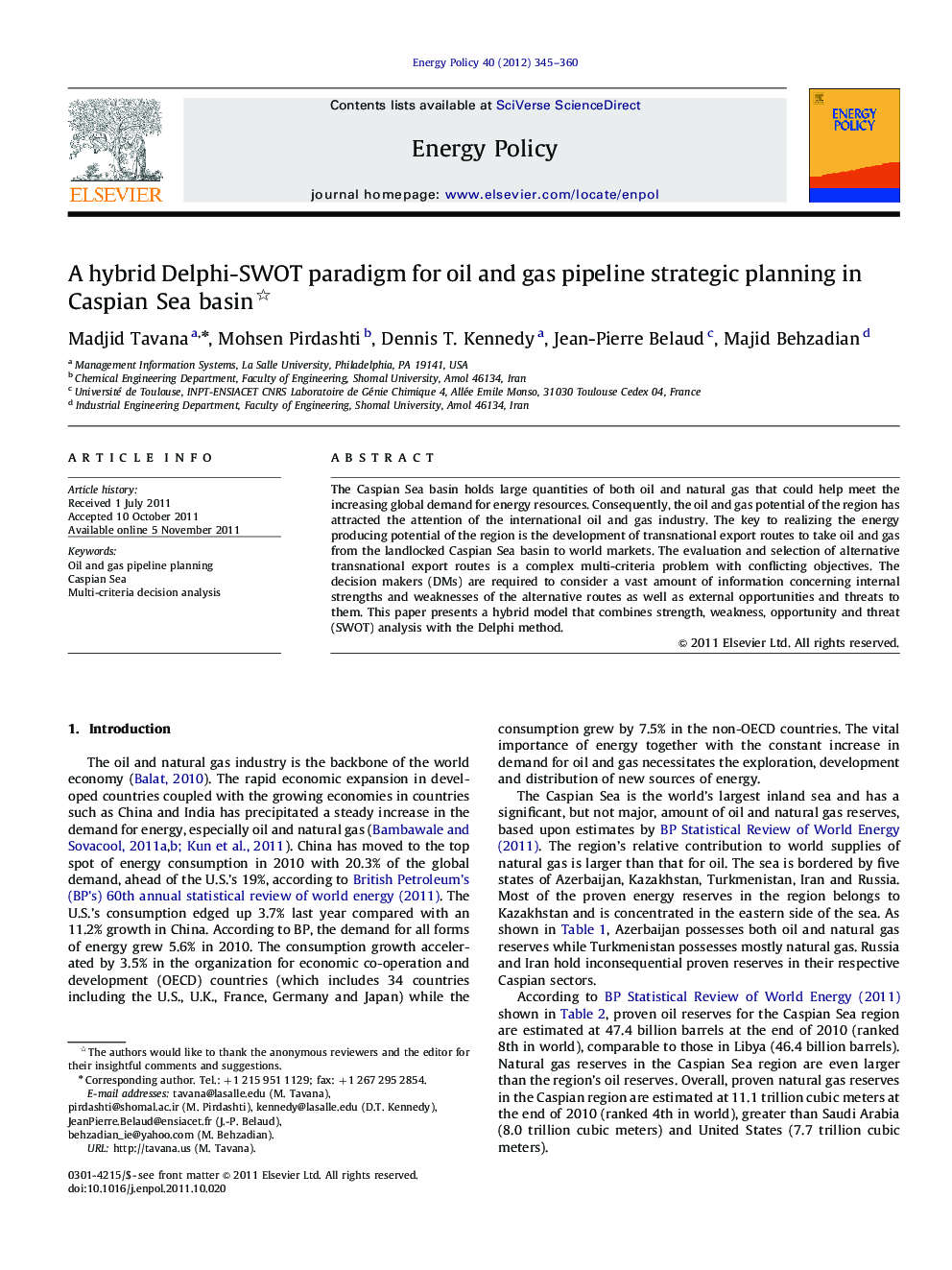| Article ID | Journal | Published Year | Pages | File Type |
|---|---|---|---|---|
| 993178 | Energy Policy | 2012 | 16 Pages |
The Caspian Sea basin holds large quantities of both oil and natural gas that could help meet the increasing global demand for energy resources. Consequently, the oil and gas potential of the region has attracted the attention of the international oil and gas industry. The key to realizing the energy producing potential of the region is the development of transnational export routes to take oil and gas from the landlocked Caspian Sea basin to world markets. The evaluation and selection of alternative transnational export routes is a complex multi-criteria problem with conflicting objectives. The decision makers (DMs) are required to consider a vast amount of information concerning internal strengths and weaknesses of the alternative routes as well as external opportunities and threats to them. This paper presents a hybrid model that combines strength, weakness, opportunity and threat (SWOT) analysis with the Delphi method.
► The evaluation and selection of the pipeline routes is a multi-criteria problem. ► A hybrid SWOT-Delphi method is proposed to evaluate five potential routes. ► The Southern and Northern routes are chosen as the best and second-best options. ► The second best option is identified to provide some degree of diversification.
